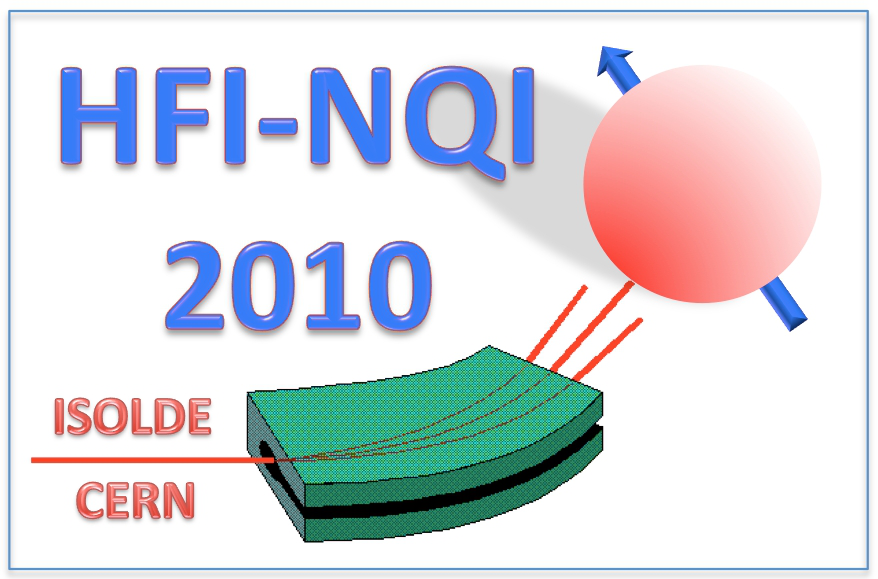Speaker
Dr
Suguru Muto
(KEK)
Description
The nuclear magnetic resonance on oriented nuclei (NMR-ON) is a powerful method for investigating the hyperfine interactions of probe nuclei in ferromagnetic metals. A systematic study of the hyperfine fields gives us very important information on the electronic structures of the elements in ferromagnetic host metals. Previously, we reported successful measurement hyperfine field of 59Fe in iron host [1], and nuclear spin-lattice relaxation time [2]. We measured the hyperfine field and nuclear spin-lattice relaxation time of 59Fe in nickel host using β-ray detected NMR-ON method. The sample of 59FeNi was produced by irradiation of 58FeNi foil with thermal neutrons. After irradiation the sample was annealed at 800oC in vacuum for 1 hour. The NMR-ON experiment was performed by 3He/4He dilution refrigerator at Niigata University. The sample was cooled down to about 10mK. The asymmetry of β rays was monitored by two Si detectors mounted at 0o and 180o with respect to the orientation axis. The resonance spectra were measured at external field B0 = 0.1, 0.2, 0.4, and 0.6 T. From the linear shift of resonance frequencies with external field B0, we obtained ν0 = 48.34(1) MHz. The magnetic moment of 59Fe was reported as μ = -0.3358(4) μN [1]. Using this value and neglecting a possible Knight shift, the hyperfine field of FeNi was deduced to be BHF = -28.33(5) T, which is in good agreement with the previously reported value of 28.2(2) T [2]. The nuclear spin-lattice relaxation time was also measured by turning FM on and off at the center of the resonance frequency. The further data analysis is in progress. References [1] T. Ohtsubo, D.J. Cho, Y.Yanagihashi and S. Ohya, Phys. Rev. C54, 554 (1996). [2] T. Ohtsubo, D.J. Cho, Y.Yanagihashi, K. Komatsuzaki, K. Mizushima, S. Muto and S. Ohya, Proceedings of the 10th International Conference on Hyperfine Interactions; Hyperfine Interactions (C), 577 (1996). [3] V.G. Bhide and G. K. Shenoy, J. Phys. Soc. Japan 21, 625 (1966).
| Are you a student, a delegate from developing countries or a participant with physical needs and would like to apply for a sponsored accomodation. Please answer with yes or no. | no |
|---|---|
| Please specify whether you would prefer an oral or poster contribution. | poster |
Author
Dr
Suguru Muto
(KEK)
Co-authors
Prof.
Katsuhiko Nishimura
(University of Toyama)
Prof.
Susumu Ohya
(Niigata University)
Prof.
Takashi Ohtsubo
(Niigata University)
Prof.
Takuji Izumikawa
(Niigata University)
